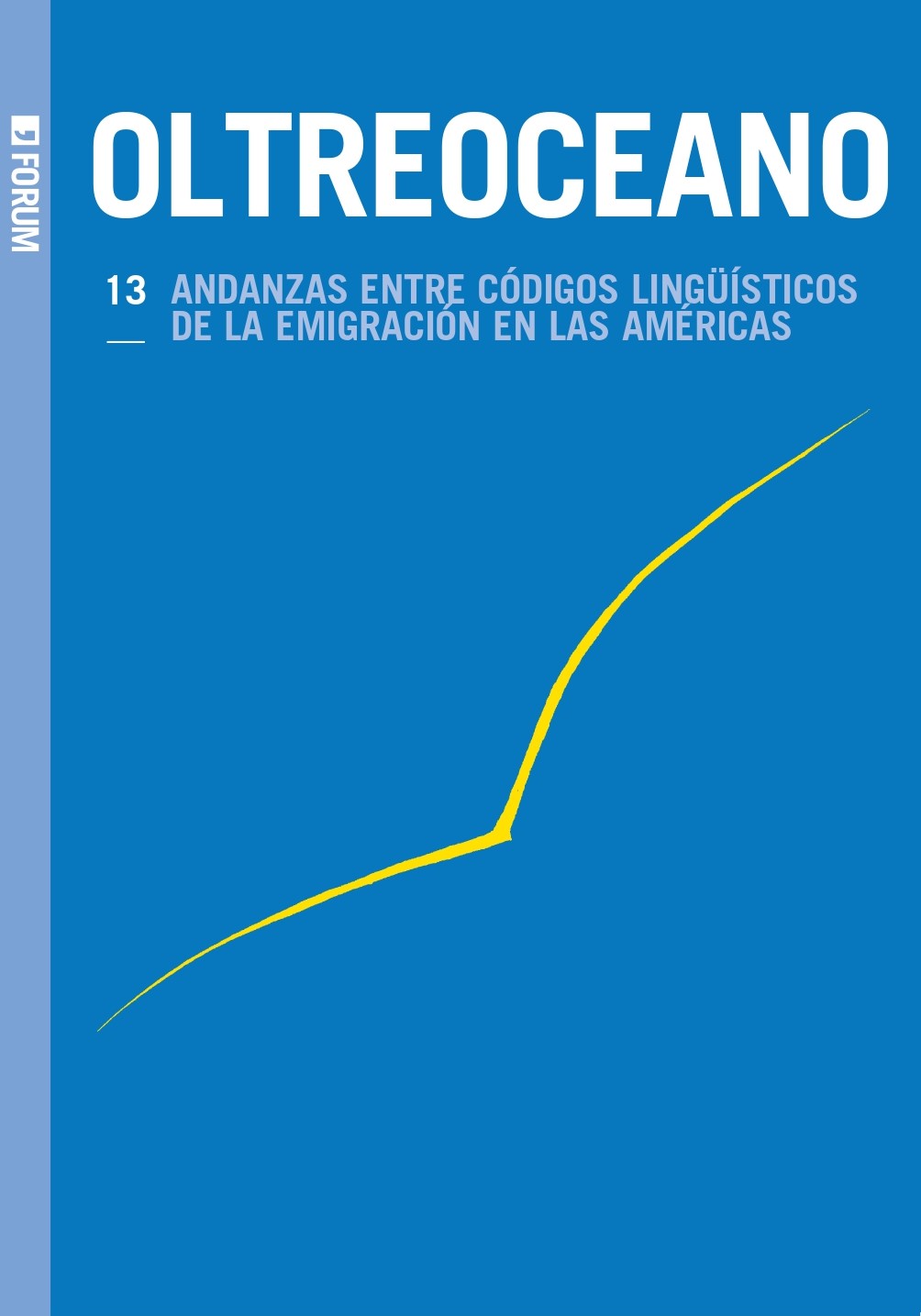Un andamio para el español
Keywords:
etimología, interlingüística, identidadAbstract
A partir de la etimología del verbo “andar” y de su familia léxica, se desarrolla una reflexión acerca del español y de las situaciones de contacto que se han creado a lo largo de la historia (desde el siglo XV hasta la actualidad) por cuestiones coloniales o migratorias. A continuación, se presentan los ensayos que componen las tres secciones de la revista −“América del Norte: Estados Unidos y Canadá”, “México y Centroamérica” y “América del Sur”− y se formulan unas consideraciones finales acerca del papel de la lengua en el proceso de formación de la identidad.
A scaffold for Spanish
From the etymology of the verb andar and its lexical family, we make a reflection on Spanish and the situations of contact that have been created throughout history (from the XV century to the present) because of colonial or migratory issues. Then we present essays that compose the three sections of the magazine −“North America: United States and Canada”, “Mexico and Central America” –and “South America”− and we make final considerations about the role of language in the process of identity formation.
Un’impalcatura per lo spagnolo
Partendo dall’etimologia del verbo “andar” e dalla sua famiglia lessicale, si fa una riflessione sullo spagnolo e sulle diverse situazione di contatto createsi nel corso della storia (dal XV secolo fino ai giorni nostri) sia per ragioni coloniali che migratorie. Di seguito, vengono presentati i saggi che compongono le tre sezioni della rivista − “América del Norte: Estados Unidos y Canadá”, “México y Centroamérica” y “América del Sur” – e vengono formulate delle considerazioni finali sul ruolo della lingua nel processo di formazione identitaria.
Downloads
References
Beccaria, G. L. (2004): Dizionario di linguistica e di filologia, metrica, retorica. Torino: Einaudi.
Bustos Gisbert, E. (1995): Dialectología, sociolingüística y español de América. Cuadernos de Filología Hispánica, 13, pp. 39-64.
Dubois, J. et al. (1994): Diccionario de lingüística. Madrid: Alianza.
Gimeno Menéndez, F. (1990): Dialectología y sociolingüísticas españolas. Alicante: Universidad de Alicante.
Henríquez Ureña, P. (1921): Observaciones sobre el español de América. RFE, 8, pp. 357-390.
Lipski, J. M. (2004): El español de América y los contactos bilingües recientes: apuntes microdialectológicos. Revista Internacional de Lingüística Iberoamericana, 2, pp. 89-103.
Marcos-Marín, F. A. Tres líneas léxicas del español en los Estados Unidos de América. In L. Luque Toro (Ed.), Léxico Español Actual (pp. 127-142). Venezia: Cafoscarina. 2007.
Marcos-Marín, F. A. (2009): Cultura, sociedad e identidad. Presencia hispana en los Estados Unidos de América. Telos, 78. Recuperado de https://telos.fundaciontelefonica.com/telos/articuloautorinvitado.asp@idarticulo=2&rev=78.htm
RAE (1976): Diccionario de autoridades, I. Madrid: Gredos.
RAE (2016): Diccionario de la Real Academia Española. Recuperado de http://dle.rae.es/?id=2ZFPFuj. 201423
Sancho Pascual, M. (2013): La integración sociolingüística de la inmigración hispana en España: lengua, percepción e identidad socia. Lengua y migración, 5, 2, pp. 91-110.
Torres Torres, A. (2004): Procesos de americanización del léxico hispánico. Valencia: Universidad de Valencia.
Downloads
Published
How to Cite
Issue
Section
License

This work is licensed under a Creative Commons Attribution-NonCommercial-ShareAlike 4.0 International License.
The authors undertake to comply with the following conditions, which are considered accepted at the time of submission of their contributions.
The sending of a text implies that it is unpublished and not submitted to be published elsewhere.
1. If accepted, the author shall confer on the publisher the right to publish and distribute it both in paper form and in the online electronic edition. The published articles will be downloadable and made available in open access.
2. Provided that it correctly indicates that the first publication took place in the journal Oltreoceano. Rivista sulle migrazioni the author has the right to: a) reproduce the article in separate extracts or collected in a volume; b) publish the article on their personal website or teaching site provided that these sites are of a non-commercial nature; c) deposit the article in online archives of a non-commercial nature, linked to the institution they belong to or as part of projects for the non-commercial dissemination and open access of scientific works.
The use of contributions by third parties, for commercial or otherwise unauthorized purposes, is not allowed. The publisher declines all responsibility for the unauthorized use of the material published in the journal.












